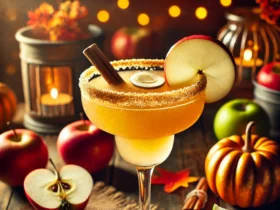Fruit flies are a common household nuisance, especially during the warmer months. These tiny pests are attracted to ripe or fermenting fruits and vegetables and can quickly become a major problem in your kitchen. Fortunately, making a fruit fly trap is easy, cost-effective, and efficient. In this article, we’ll explore various methods to create fruit fly traps, their effectiveness, and provide answers to frequently asked questions about dealing with these pesky insects.
Why Do You Need a Fruit Fly Trap?
Fruit flies can multiply rapidly, and their presence is more than just an annoyance. They can contaminate food with bacteria and other pathogens. Controlling fruit fly populations is crucial for maintaining a clean and healthy home environment.
DIY Fruit Fly Trap Methods
1. Vinegar and Dish Soap Trap
Materials Needed:
- A small bowl or jar
- Apple cider vinegar
- Dish soap
- Plastic wrap (optional)
Instructions:
- Fill the bowl or jar with apple cider vinegar. The vinegar’s scent attracts the fruit flies.
- Add a few drops of dish soap to the vinegar. This breaks the surface tension, causing fruit flies to sink and drown.
- (Optional) Cover the bowl or jar with plastic wrap and poke a few small holes. This allows fruit flies to enter but makes it harder for them to escape.
2. Fruit and Plastic Wrap Trap
Materials Needed:
- A piece of ripe or overripe fruit
- A small bowl
- Plastic wrap
- Toothpick or fork
Instructions:
- Place the piece of fruit in the bowl.
- Cover the bowl with plastic wrap, ensuring it is tightly sealed around the edges.
- Poke several small holes in the plastic wrap using a toothpick or fork. Fruit flies will be attracted to the fruit, crawl through the holes, and become trapped.
3. Wine Trap
Materials Needed:
- A small amount of red wine
- A small bowl or jar
Instructions:
- Pour the wine into the bowl or jar. Fruit flies are attracted to the fermenting smell.
- Leave the bowl or jar out overnight. The flies will be lured in by the scent and will drown in the liquid.
4. Paper Cone and Vinegar Trap
Materials Needed:
- A piece of paper
- A small jar
- Apple cider vinegar
- A piece of ripe fruit
Instructions:
- Roll the piece of paper into a cone shape with a small opening at the bottom.
- Place the cone into the jar, narrow end down.
- Pour the vinegar into the jar and add a piece of ripe fruit.
- The fruit flies will be attracted to the vinegar and fruit, enter through the cone, and be unable to escape.
Effectiveness of Different Traps
Each of these traps can effectively reduce the fruit fly population in your home. The vinegar and dish soap trap is often considered the most effective due to the added element of dish soap, which ensures that the flies are unable to escape once they land in the liquid. However, the choice of trap may depend on what materials you have readily available and your personal preference.
Preventing Future Infestations
Creating fruit fly traps is a great way to deal with an existing problem, but prevention is key to avoiding future infestations. Here are some tips to keep fruit flies at bay:
- Store Fruits and Vegetables Properly: Keep ripe fruits and vegetables in the refrigerator, and dispose of any overripe or rotting produce promptly.
- Clean Regularly: Ensure that kitchen surfaces, trash cans, and recycling bins are clean and free of food debris.
- Seal Containers: Store pantry items such as grains, nuts, and other dry goods in sealed containers.
- Take Out the Trash: Regularly empty your trash and compost bins to prevent fruit fly attraction.
- Drain Maintenance: Keep sink drains clean and clear of food particles that can attract fruit flies.
FAQs about Fruit Fly Traps
Q1: What attracts fruit flies? A1: Fruit flies are attracted to the smell of ripe or fermenting fruits and vegetables. They are also drawn to sugary substances and anything that is fermenting, such as wine, vinegar, and beer.
Q2: How long does it take for a fruit fly trap to work? A2: Most fruit fly traps begin to show results within a few hours. However, it may take a few days to significantly reduce the fruit fly population in your home.
Q3: Can I use white vinegar instead of apple cider vinegar in fruit fly traps? A3: While apple cider vinegar is more effective due to its stronger scent, white vinegar can also be used. You may need to add a bit of ripe fruit to the trap to enhance its attractiveness.
Q4: Why do I need to add dish soap to the vinegar trap? A4: Dish soap breaks the surface tension of the vinegar, causing the fruit flies to sink and drown instead of landing on the surface and flying away.
Q5: What should I do if the fruit fly traps are not working? A5: If the traps are not working, try changing the bait or relocating the traps to different areas. Ensure that the traps are set up correctly and consider using multiple traps for a larger infestation.
Q6: Are there any natural repellents for fruit flies? A6: Yes, certain herbs and essential oils, such as basil, mint, and eucalyptus, can help repel fruit flies. Placing these around your kitchen may deter fruit flies from entering.
Q7: How do I dispose of trapped fruit flies? A7: Simply pour the contents of the trap down the sink and rinse it out with hot water. Refill the trap with fresh bait if necessary.
Q8: Can fruit flies harm my plants? A8: Fruit flies are primarily attracted to ripe and fermenting fruits and vegetables, and they do not typically harm live plants. However, their presence can indicate other issues with plant care or hygiene.
Conclusion
Fruit flies can be a persistent problem, but with the right traps and preventive measures, you can effectively control and eliminate these pests from your home. By using simple household materials, you can create effective fruit fly traps and enjoy a fly-free kitchen. Remember to maintain cleanliness and proper food storage to prevent future infestations. If you have any further questions about fruit fly control, refer to the FAQs section or consult a pest control professional for additional assistance.







Leave a Reply